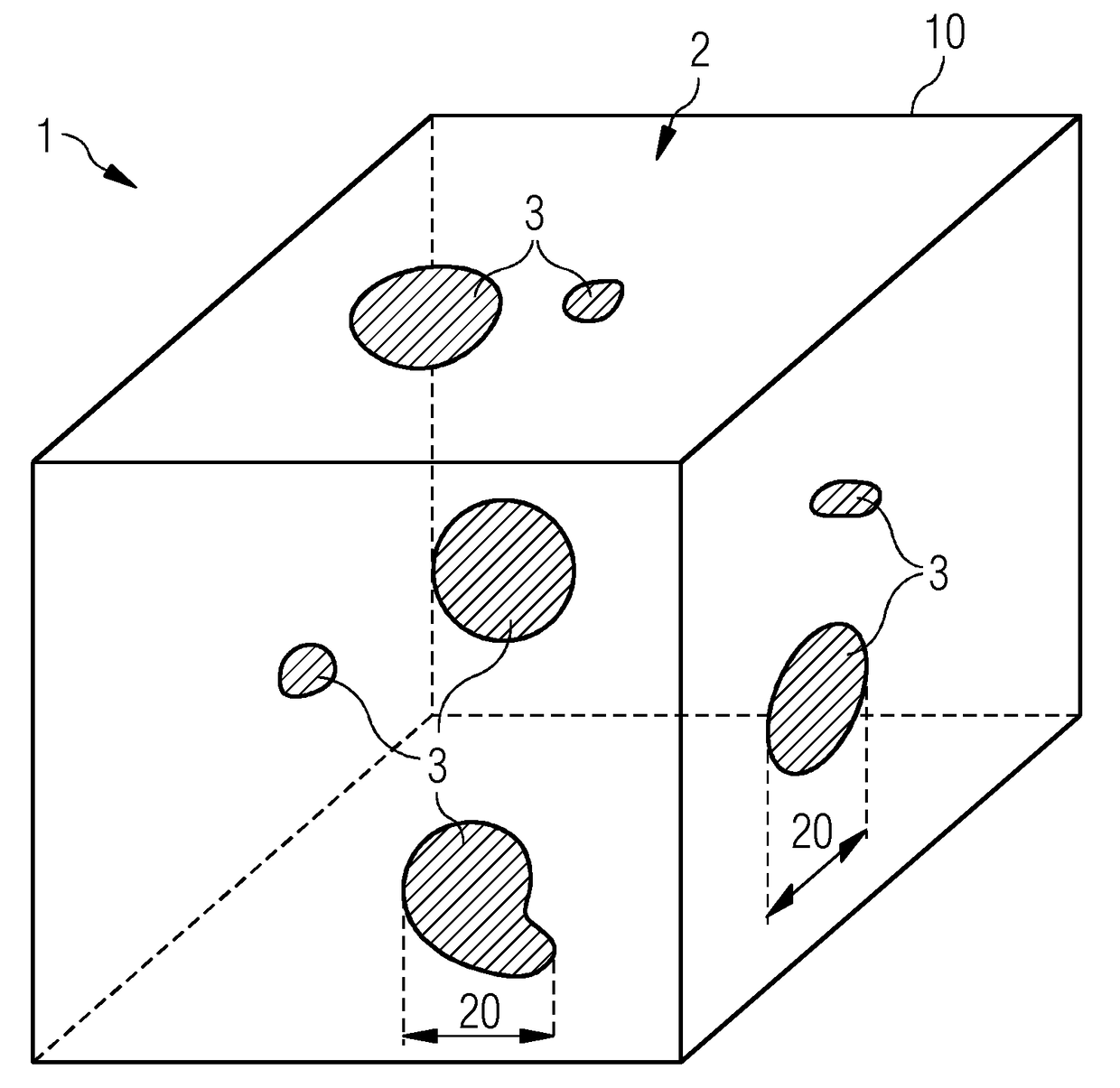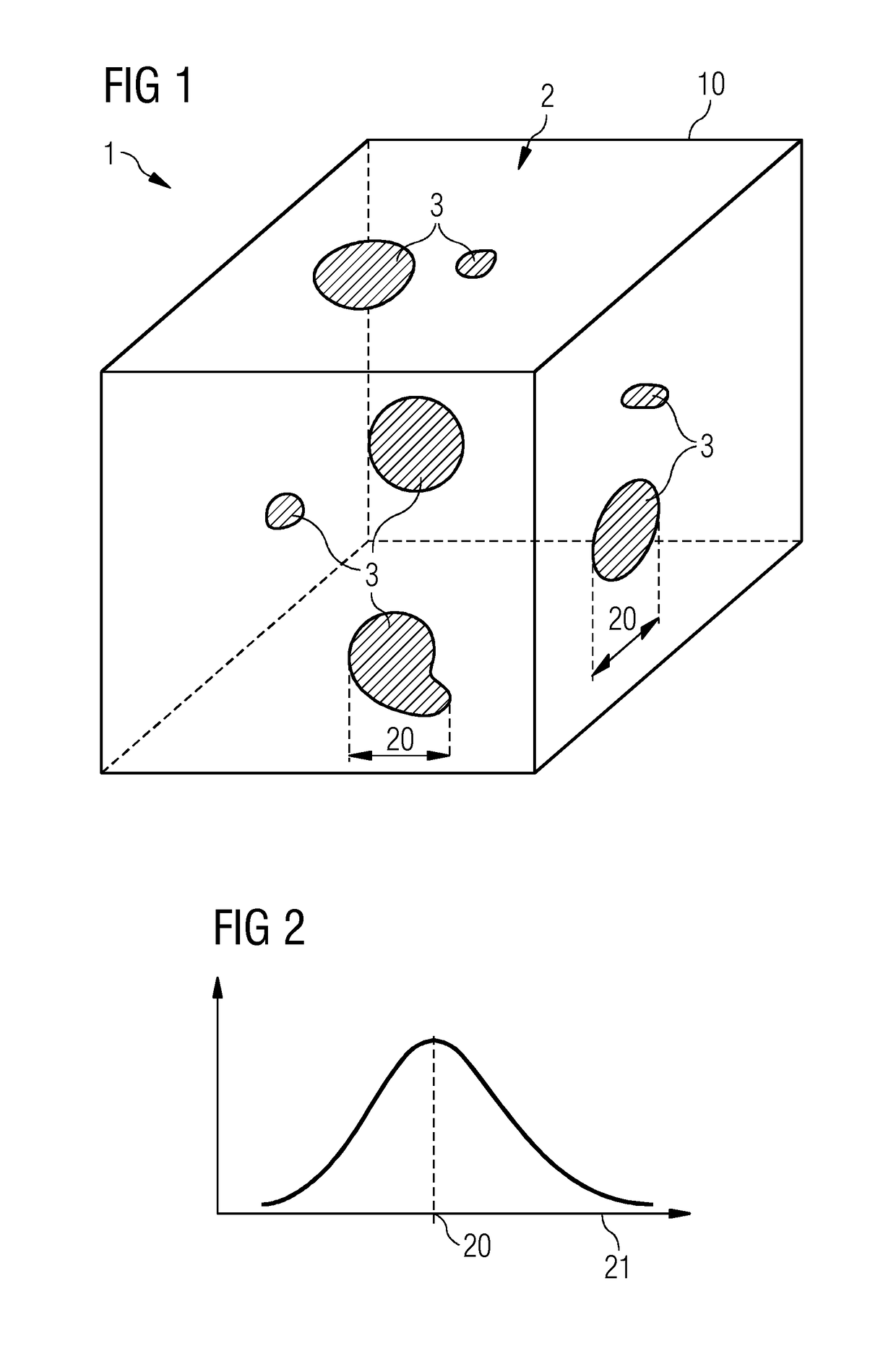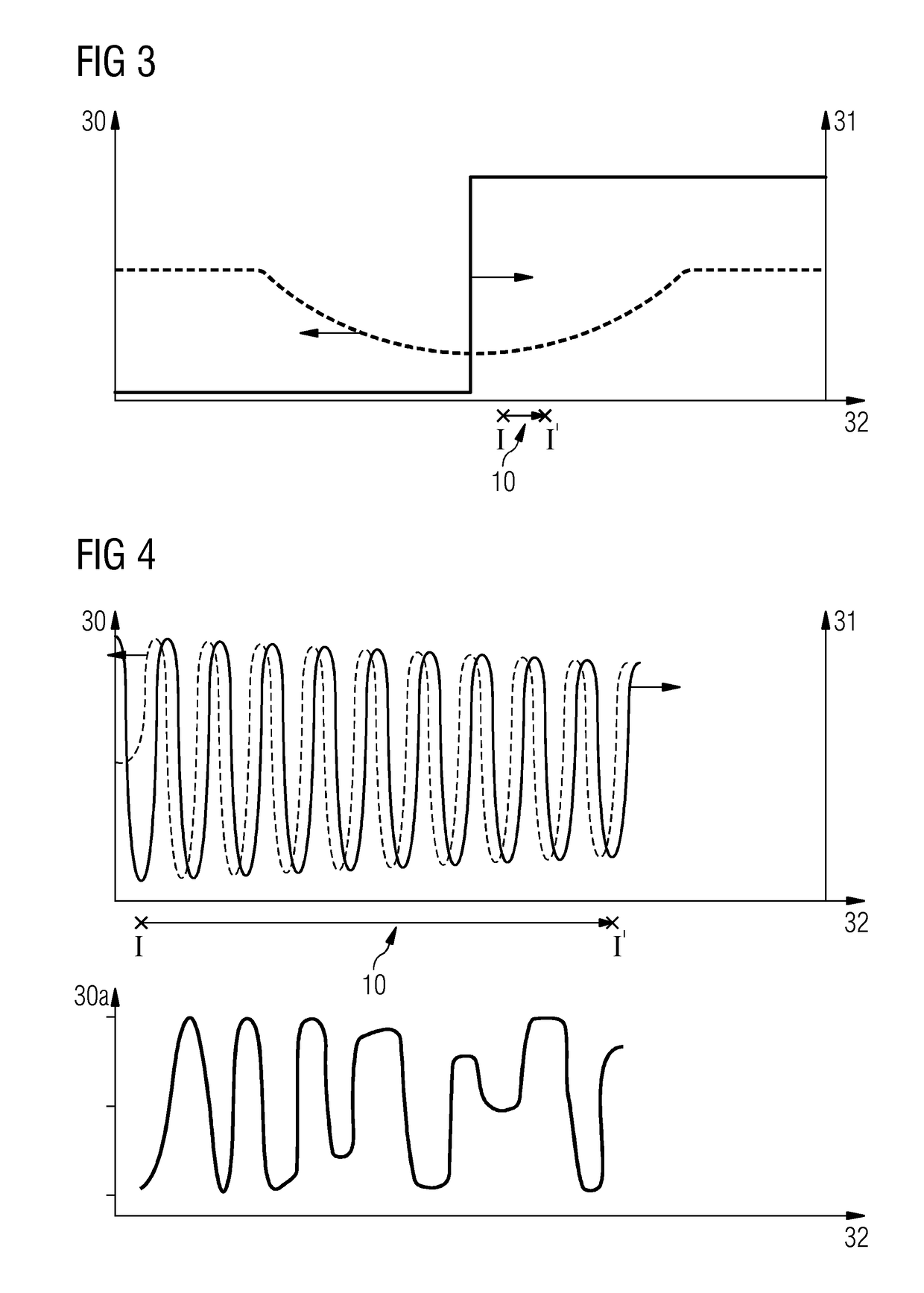Material for use in a magnetic resonance system, method for producing the material and magnetic resonance system
a technology of magnetic resonance system and material, applied in the direction of magnetic bodies, instruments, magnetic/organic-metallic materials magnetism, etc., can solve the problems of incorrect diagnosis, unusable image for diagnosis purposes, and artifacts in mr images, so as to reduce mr visibility, reduce the time of relaxation, and reduce the visibility of mr imaging
- Summary
- Abstract
- Description
- Claims
- Application Information
AI Technical Summary
Benefits of technology
Problems solved by technology
Method used
Image
Examples
Embodiment Construction
[0050]The present invention is explained in more detail below with reference to example embodiments and with reference to the drawings. In the figures, the same reference characters designate the same or similar elements.
[0051]FIG. 1 shows a material 1, which is made up of a carrier material 2 and an admixed doping material 3. The doping material is depicted as embedded in particles or clusters in the carrier material 2. A particle size 20 is indicated.
[0052]FIG. 2 shows a particle size distribution 21, i.e. a frequency of different particle sizes, by way of example. The maximum of the particle size distribution 21 can, for example, be the particle size 20. In FIG. 2, the particle size distribution 21 is described by a Gaussian curve. For example, the particle size 20 can be smaller than 200 μm, in particular smaller than 100 μm, in particular smaller than 10 μm.
[0053]With reference once again to FIG. 1, it is evident that there are local deviations in the concentration of the dopin...
PUM
| Property | Measurement | Unit |
|---|---|---|
| volume | aaaaa | aaaaa |
| particle size | aaaaa | aaaaa |
| particle size | aaaaa | aaaaa |
Abstract
Description
Claims
Application Information
 Login to View More
Login to View More - R&D
- Intellectual Property
- Life Sciences
- Materials
- Tech Scout
- Unparalleled Data Quality
- Higher Quality Content
- 60% Fewer Hallucinations
Browse by: Latest US Patents, China's latest patents, Technical Efficacy Thesaurus, Application Domain, Technology Topic, Popular Technical Reports.
© 2025 PatSnap. All rights reserved.Legal|Privacy policy|Modern Slavery Act Transparency Statement|Sitemap|About US| Contact US: help@patsnap.com



